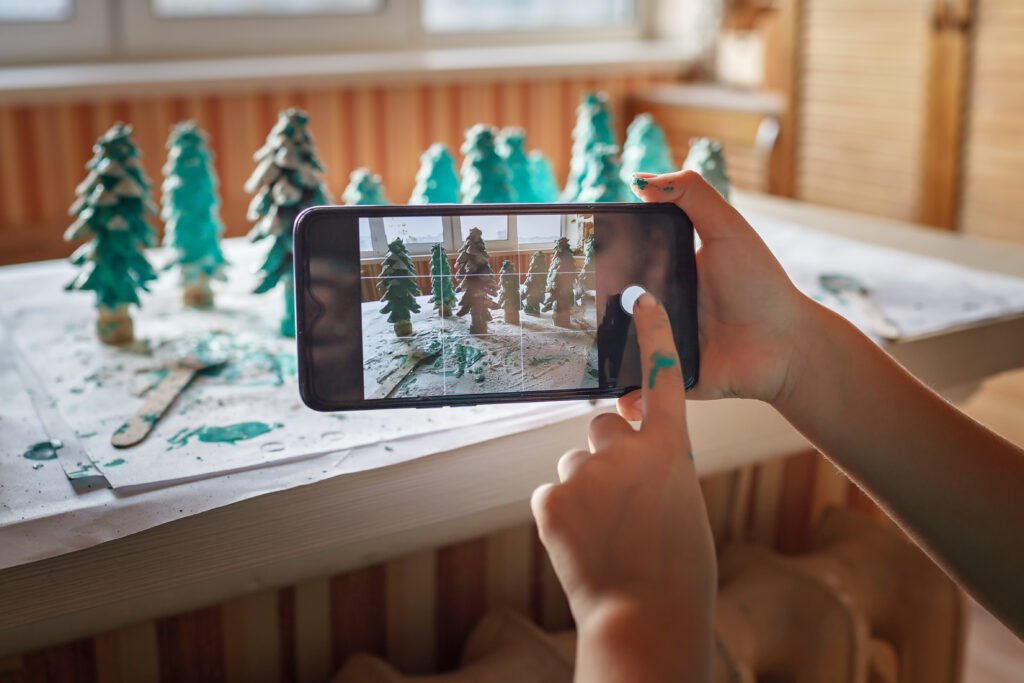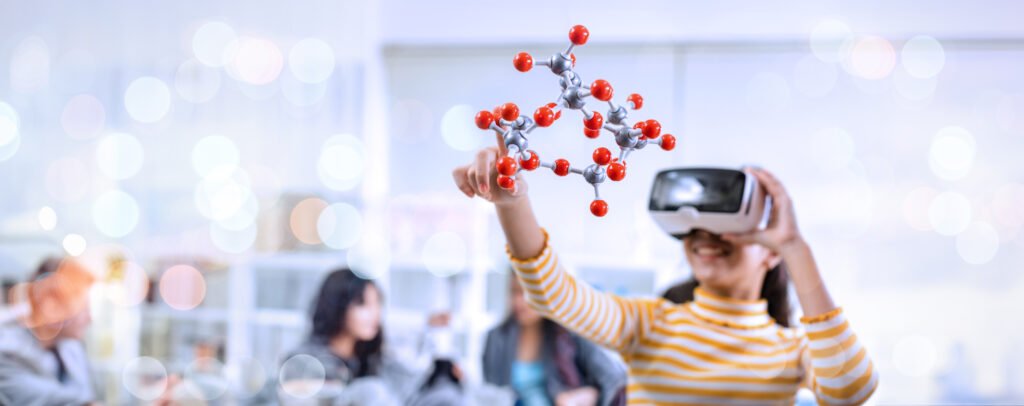Augmented reality has evolved far beyond being just a technological tool for games or advertising. In the art world, it has become a medium of expression and interaction that connects worlds, blending physical and digital elements in real time. By adding virtual layers to our physical space, artists can create immersive experiences that expand perception and stimulate imagination.
This fusion of art and technology breaks traditional boundaries, allowing the audience to become part of the artwork, interacting with it directly. The result is a unique, personalized experience that changes the way we understand and consume art.
The Integration of Augmented Reality with Visual Arts
According to the book Augmented Human: How Technology Is Shaping the New Reality by Dr. Helen Papagiannis, published in 2017, augmented reality “is not just a window into another world, but a way to reimagine the very world we live in.” This concept has inspired artists to create urban interventions, museum installations, and interactive exhibitions that rely on active audience participation.
The visual arts have found in AR a fertile field for experimentation. Paintings come to life with animations that can only be revealed through apps, sculptures interact with viewers, and street murals turn into portals for digital narratives. This convergence offers new layers of interpretation, making each piece multifaceted.
In addition, renowned museums such as the Museum of Modern Art (MoMA) in New York have been exploring the technology to enhance visits. With augmented reality, classic works can be contextualized with historical information, 3D reconstructions, and even simulations of the artist’s creative process.
Augmented Reality and Performance Art
In the realm of performance, augmented reality has opened new creative possibilities. According to the book Augmented Reality Art: From an Emerging Technology to a Novel Creative Medium, edited by Vladimir Geroimenko and published in 2014, “the potential of AR lies in its ability to create hybrid worlds where the viewer is also the protagonist.”

Dance, theater, and music performances have incorporated interactive projections that respond to the movements of artists and audiences. This integration results in dynamic performances, where the narrative can change at each presentation, making every moment unrepeatable.
Outdoor events have also benefited from AR. Digital art festivals use the technology to create virtual scultures in public squares and parks, accessible through smartphones. This way, art transcends physical limits and spreads across urban space.
The Future of Augmented Reality in Art
The trend is for augmented reality to become even more present in the artistic landscape. With the advancement of devices like smart glasses and easy-to-use development platforms, creating immersive experiences will become more accessible. This will allow independent artists to explore new languages and reach audiences that were previously out of reach.
According to the book Learning Augmented Reality Development by Joseph Hocking, published in 2018, the popularization of AR tools “democratizes the creative process, allowing anyone with an idea to shape the digital space that surrounds us.” This democratization opens the way for more diverse cultural manifestations, amplifying the voices and perspectives present in the art scene.
In the future, we are likely to see even greater integration between augmented reality, artificial intelligence, and the Internet of Things, creating artworks that not only interact with the audience but also respond intelligently to the environment, emotions, and preferences of each individual.
Furthermore, augmented reality is not just a technological complement to art; it is a means of expanding its boundaries. It redefines the relationship between artwork and viewer, transforms spaces, and offers new ways to tell stories. More than a trend, it is a milestone in artistic evolution, capable of connecting cultures, provoking reflections, and reinventing what we understand as an aesthetic experience.
In this new panorama, the artist ceases to be just a creator and becomes an architect of realities. And by uniting the physical and the digital, they invite the audience to inhabit worlds that, until recently, existed only in imagination.



